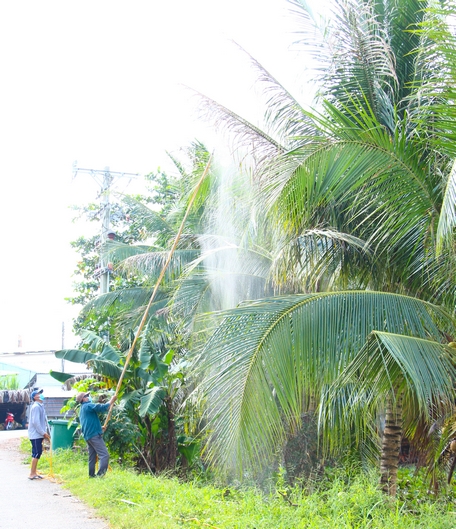 |
| Black headed caterpillar is a new pest appearing on coconut trees, causing serious damage to coconut gardens. |
Early detection for timely prevention and treatment
According to the Department of Crop Production and Plant Protection (Department of Agriculture and Rural Development), the disease is a new pest that has appeared on coconut trees, causing serious damage to coconut gardens in Ben Tre province. In Vinh Long, this pest has appeared in Vung Liem and Long Ho districts... In mid-October 2023, the disease was recorded causing damage to coconut gardens in Trung Thanh Tay and Quoi An communes (Vung Liem) with an infected area of nearly 4 hectares (the rate of severe infection is 70%, 0.2 hectares, the rest is lightly infected to less than 20%).
According to the Department of Agriculture and Rural Development of Vung Liem district, as of early November 2023, the coconut growing area in the whole district was 5,134 hectares. Most of these are industrial coconut groups (exploiting dry coconut meat for oil) and currently generate an income of about 60-70 million VND/ha/year. Since 2020, SDĐ has caused serious damage to many coconut gardens in Ben Tre province.
Due to its geographical location bordering this province, Thanh Binh commune (Vung Liem) also suffered damage from LDW since mid-2022 with an area of about 1ha. However, the authorities then launched a prevention campaign and since then LDW has been controlled in the district. However, in recent years, the lack of attention from gardeners to care for coconut gardens due to low prices of dry coconuts combined with many other unfavorable factors has caused LDW to spread rapidly.
Accordingly, at the end of October 2023, the District Plant Protection and Cultivation Station recorded the appearance of BPH in the coconut gardens of some households in Tan Trung Hamlet (Trung Thanh Tay Commune, Vung Liem District). Among them, Mr. Cao Van Nam's household suffered the heaviest damage with an area of about 0.2 hectares. If we do not pay attention to preventing BPH from the beginning, the damage will be very large (up to 60-70%).
Having grown coconuts for over 10 years, Mr. Dang Van Xua (Tan Trung Hamlet, Trung Thanh Tay Commune, Vung Liem District) said: “This type of worm spreads quickly and causes serious damage if not prevented and treated promptly. My coconut garden has just started to get sick, so I immediately reported it to the local agricultural sector for timely prevention and control measures.”
Do not be negligent or subjective with black-headed worms.
According to the agricultural sector, the solution to prevent and control coconut leafhoppers requires a lot of effort but is not very effective, and the heavily infected gardens are slow to recover. Meanwhile, the comprehensive prevention and control solution, preventing from the beginning, is considered the most optimal solution at present, along with the combination of biological control solutions, using natural enemies, and planting a variety of plants (especially flowering plants) in the coconut garden.
Accordingly, in recent years, the Department of Crop Production and Plant Protection has implemented models of breeding and releasing these natural enemies into coconut gardens in districts with large coconut growing areas in the province. At the same time, it has coordinated with localities to launch and organize the prevention of coconut leafhoppers by using many comprehensive solutions such as: releasing pintail beetles, parasitic wasps, using biological pesticides, cleaning gardens, etc.
According to the agricultural sector, land use management is currently being tested with many measures to ensure high economic efficiency for farmers, while ensuring safety for the environment, livestock and users as well as ensuring food safety and protecting the coconut garden ecosystem.
According to Mr. Duong Ai Dao - Deputy Head of the Department of Agriculture and Rural Development of Vung Liem district, to prevent and control coconut worm, it is necessary to combine many measures such as regularly visiting the garden, detecting this object early to have timely prevention and control measures. Cut off and destroy damaged coconut leaves (burn or soak in water) to kill larvae, pupae, and eggs.
In addition, apply biological measures and fertilize adequately and balance nutrition for coconut gardens that have been damaged by SDĐ. For chemical measures, pay attention to active ingredient drugs that have little impact on the environment and only use when really necessary.
| To prevent and control black headed coconut worms, it is necessary to combine many farming measures. |
Mr. Nguyen Vinh Phuc - Head of the Department of Cultivation and Plant Protection, said: To effectively manage the harmful effects of coconut weeds, the agricultural sector needs the cooperation of gardeners. Gardeners need to pay attention to garden care and apply many environmentally friendly farming techniques.
When detecting sedge, it is necessary to immediately report to the relevant authorities and local authorities. Absolutely do not be negligent, always be vigilant against sedge and be proactive in preventing and controlling this pest.
The scientific name of the arenosella moth is Opisina arenosella, belonging to the moth family (Oecophoridae), the type of insect that often hosts coconuts, palm oil, and ornamental coconuts... The eggs of the arenosella moth are spherical, opaque white, and turn pink when about to hatch. The eggs are scattered on the underside of leaves. The egg stage lasts from 4-5 days. After the eggs hatch, the larvae usually go through 8 stages of development within 46 days. The larvae pupate right on the leaflets of the coconut leaves, they spin silk from debris (larval waste) into cocoons and pupate inside, the pupae are light brown and turn dark brown when about to hatch. The pupal stage can last from 9-11 days at room temperature. Adult arenosella moths belong to the moth family, with gray-white forewings with scattered brown spots on the wings. During the day, they often hide on the underside of leaflets and bushes under the coconut canopy. Females lay eggs in groups on the tunnels of leaves damaged by larvae. An adult female can lay about 49-490 eggs. |
Article and photos: PHI LONG
Source


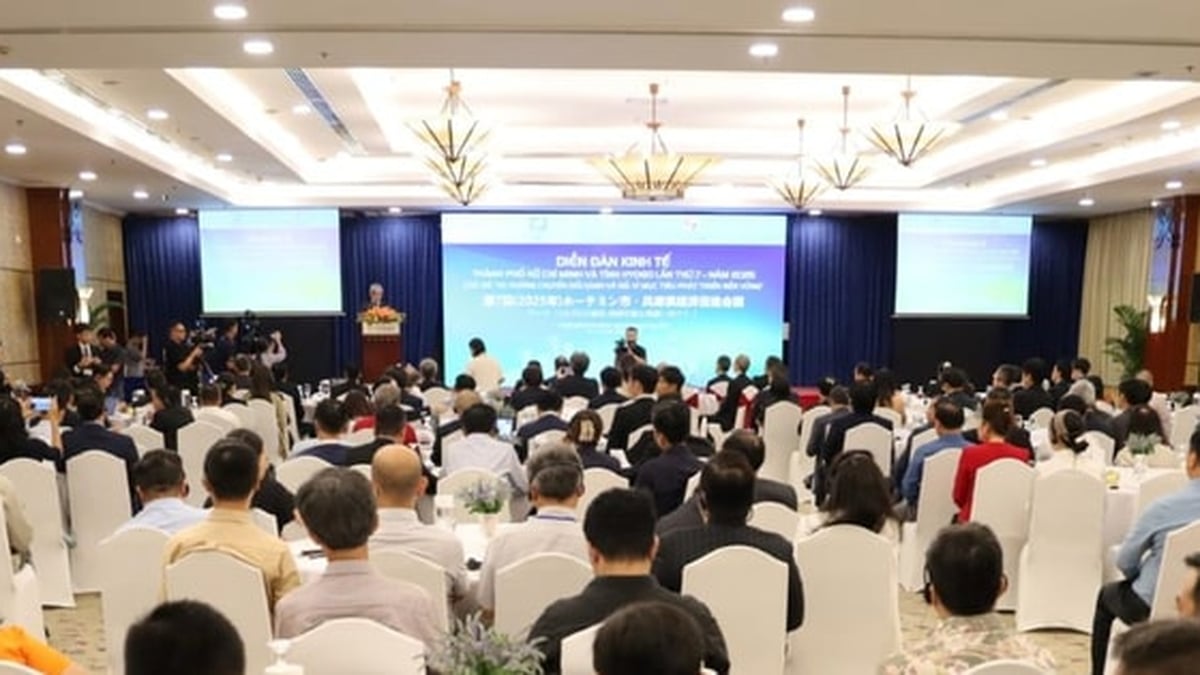

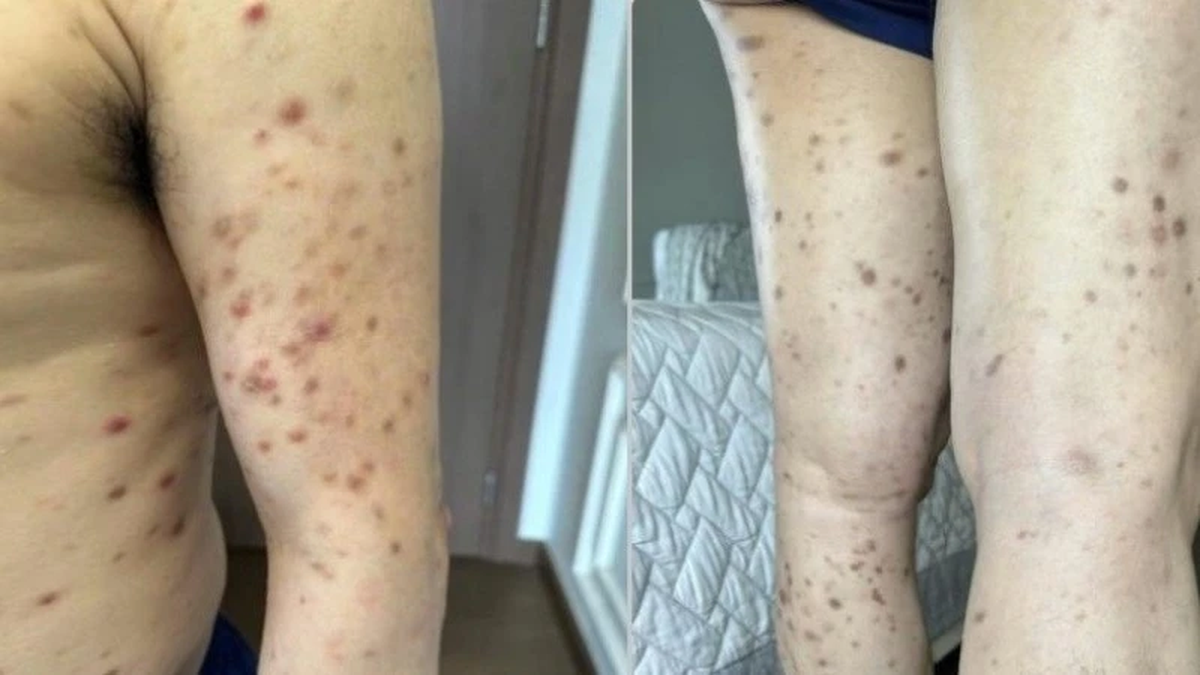
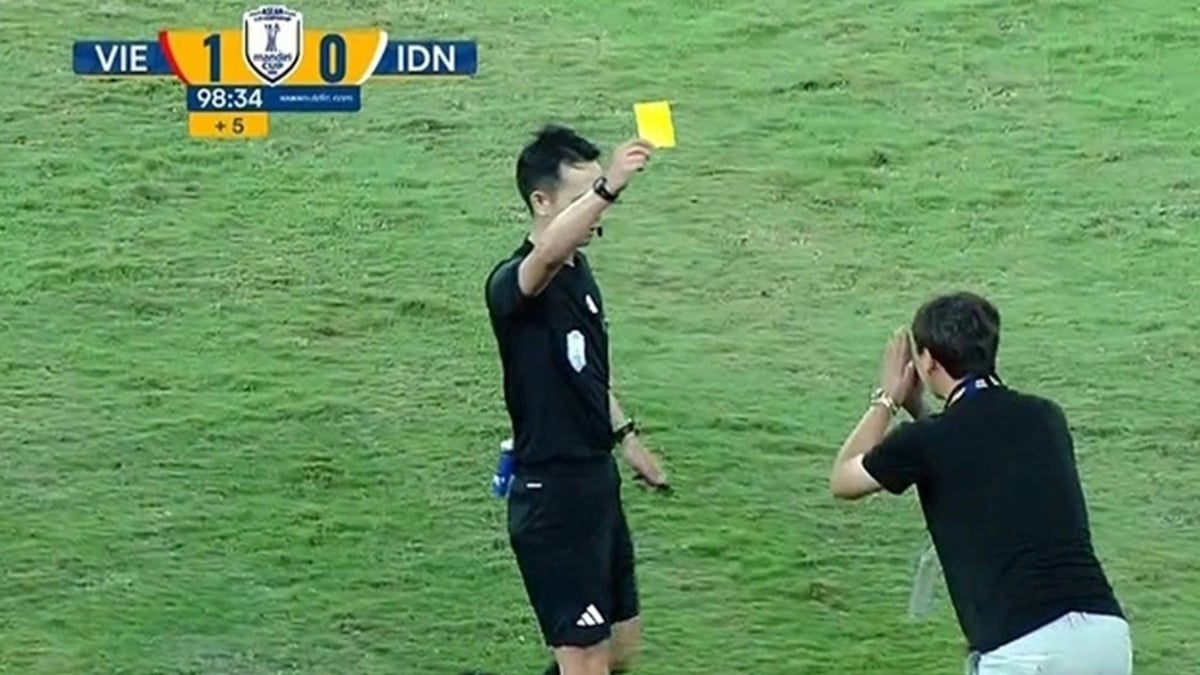
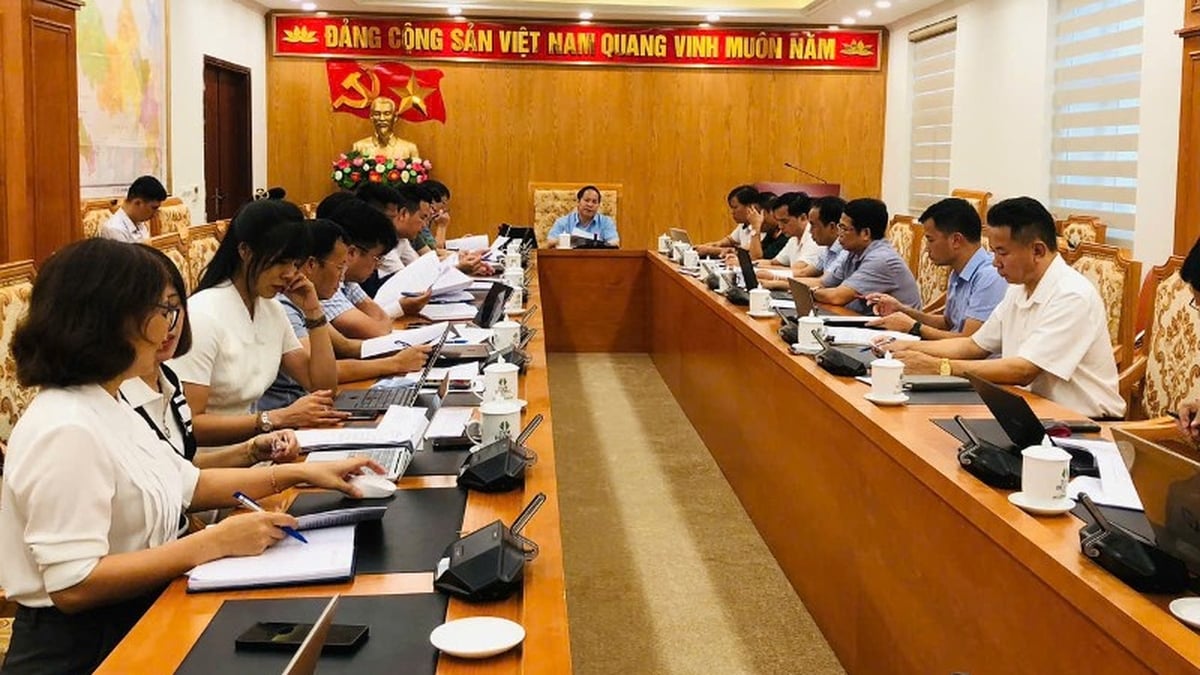
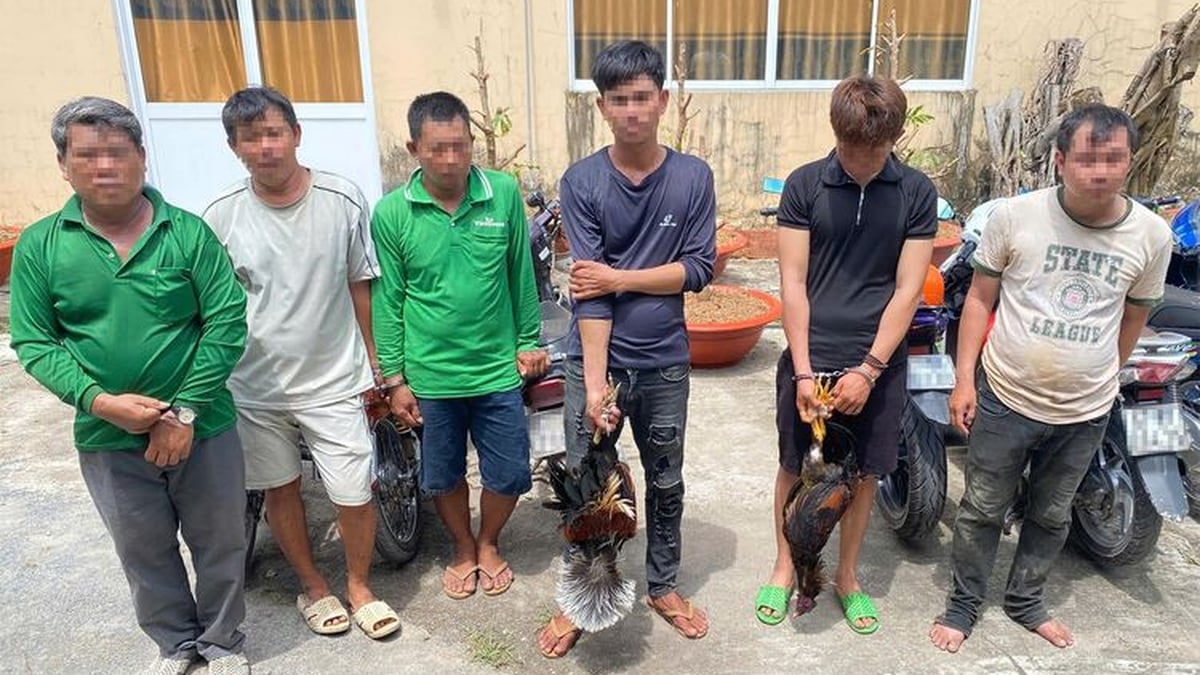
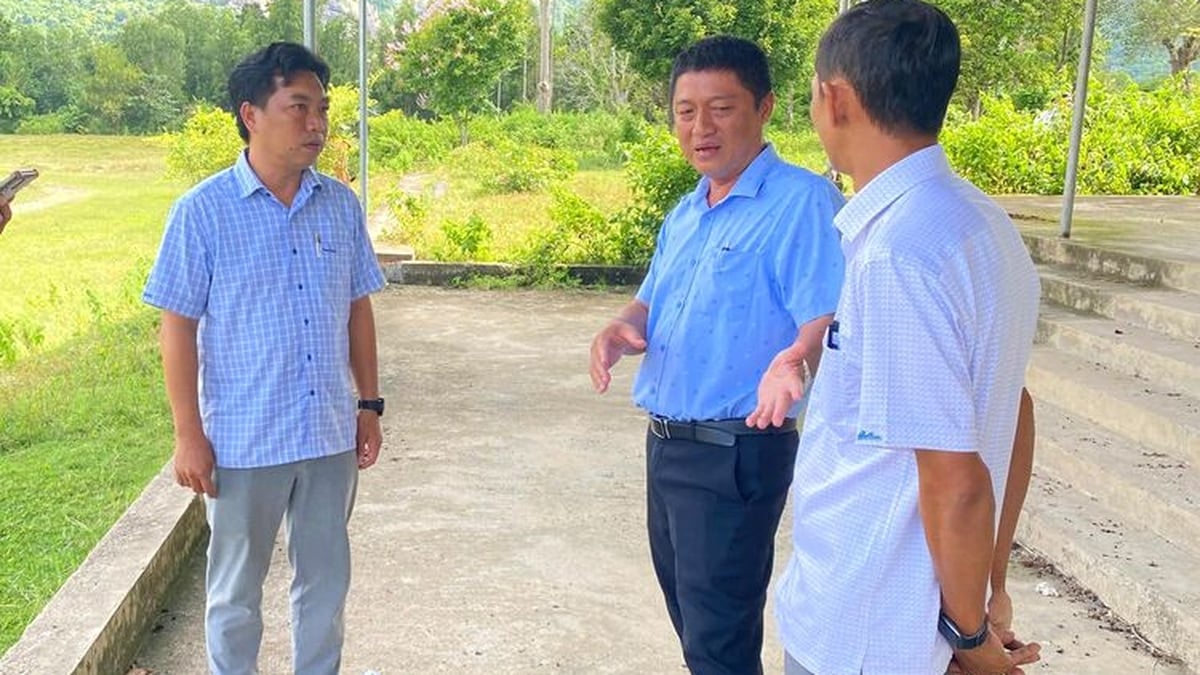


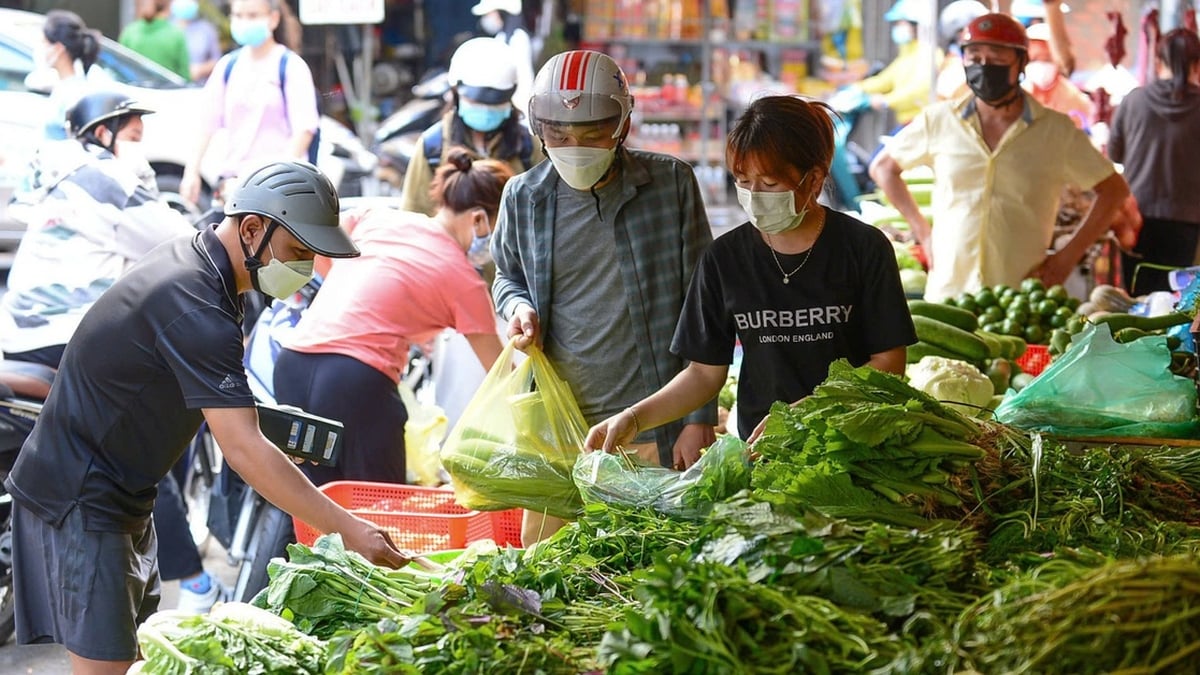
























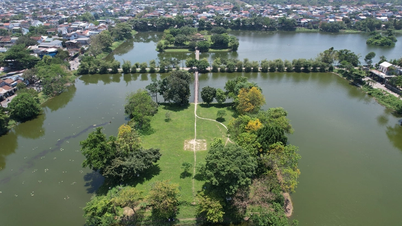


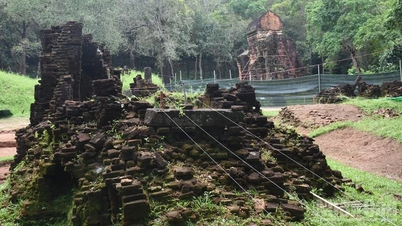





















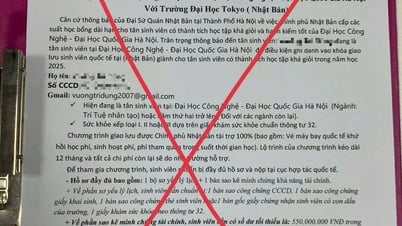




































Comment (0)